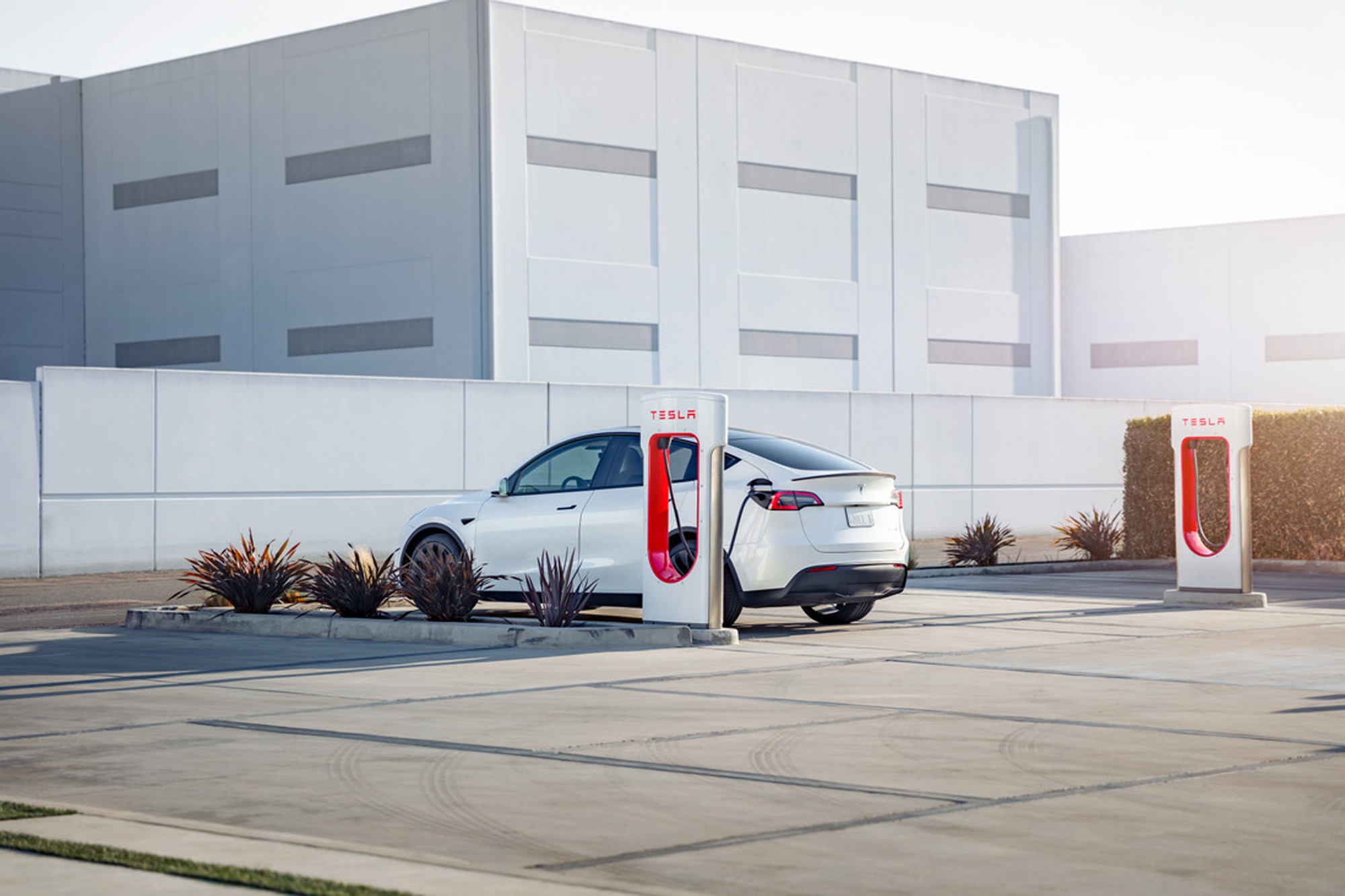What Is a Tesla Supercharger?
Those red-on-white towers labeled “Tesla” belong to one of the largest EV-charging networks in North America.
 Tesla
Tesla
Superchargers are Tesla’s DC fast-charging units, designed exclusively for use by the company’s vehicles. The automaker owns and operates the stations itself and, as of January 2022, has over 1,400 active sites in North America, with many located along major cross-country routes to allow for long-distance travel.
According to Tesla, the latest Model S sedan with a prewarmed battery can recoup some 200 miles of range by hooking up to its most powerful V3 chargers for 15 minutes. A Supercharger’s capabilities depend on its age. V1 and V2 models provided up to 120 and 150 kWs of power, respectively, for every two stalls. If two vehicles simultaneously charge from paired units, they split the power. Tesla introduced its latest V3 Superchargers in 2019. They can provide up to 250 kWs at each plug—no more power sharing—and rumor has it, output may increase to 324 kWs by the end of 2022.
Not all Tesla stations have V3 Superchargers, and not every Tesla can leverage all the available power. For instance, pre-2021 Model S and X vehicles can’t charge at 250 kWs, at least currently. (Tesla has increased the maximum charging rates on older models in the past via over-the-air updates.) Additionally, Tesla’s first passenger car, the 2008-12 Roadster, is incompatible with Superchargers.
While available adapters permit Tesla vehicles to use other charging networks, non-Tesla EVs aren’t able to use Superchargers—for the most part. Tesla just launched a pilot program in the Netherlands in late 2021 that allows owners of competitors’ EVs to use certain Superchargers in that country. Compatible stations have both Tesla’s proprietary plug as well as the more universal CCS connector, which these owners must use. In the U.S., no Supercharger has a CCS hookup, but Tesla recently applied for a grant to build a station in Texas that would require the automaker to install at least one unit with such a plug. While it could satisfy this stipulation with a third-party machine, Tesla may very well use this opportunity to give other EV owners access to its network.
How Do I Find and Use a Supercharger?
Perhaps the easiest way to locate a Supercharger is with a Tesla’s navigation system, which not only shows you available nearby stations, but recommends Superchargers along the way when you enter a destination. Alternatively, you can use a smartphone app, such as Tesla’s or PlugShare, to find a station.
Using a Supercharger is simple: just plug the cable into your vehicle’s charge port. Tesla’s unique connector provides a communication link between the vehicle, Supercharger, and charging network, automatically handling user login and payment information, and selecting the best charging rate available.
How Much Does It Cost to Use a Supercharger?
It varies by location, battery charge status, current station use, etc. But one thing’s consistent: the quicker the charging rate, the higher the cost. The best way to check current Supercharging costs near you is to consult the aforementioned in-car nav system.
If you want a free recharge, keep your eyes peeled. Tesla occasionally offers free Supercharging to owners as a promotion during select dates or along specific routes.
Written by humans.
Edited by humans.
 Evan McCausland
Evan McCauslandCar, truck, train, or bus—if a vehicle has wheels, chances are Evan McCausland is interested in it. More importantly, he’s interested in helping others learn more about cars and trucks, especially when it comes time to make a decision on their next vehicle purchase. For nearly two decades, he’s been fortunate to have the opportunity to do just that, writing for major automotive publications, automotive clubs, and automakers alike.
Related articles
View more related articles